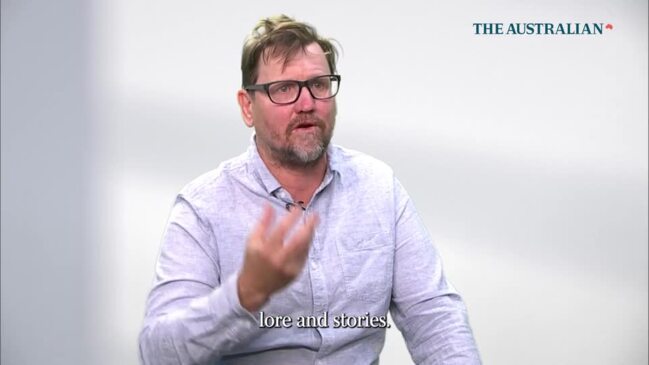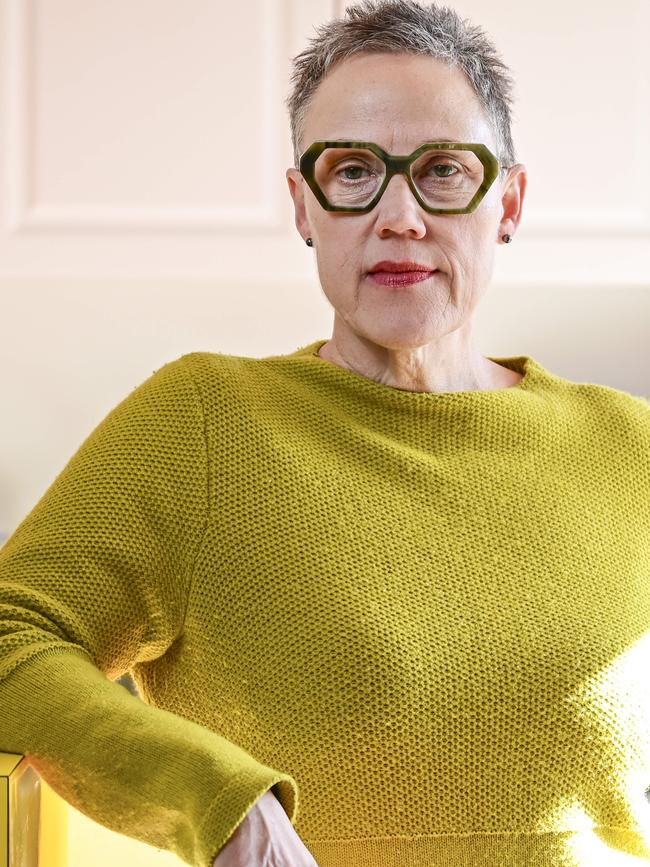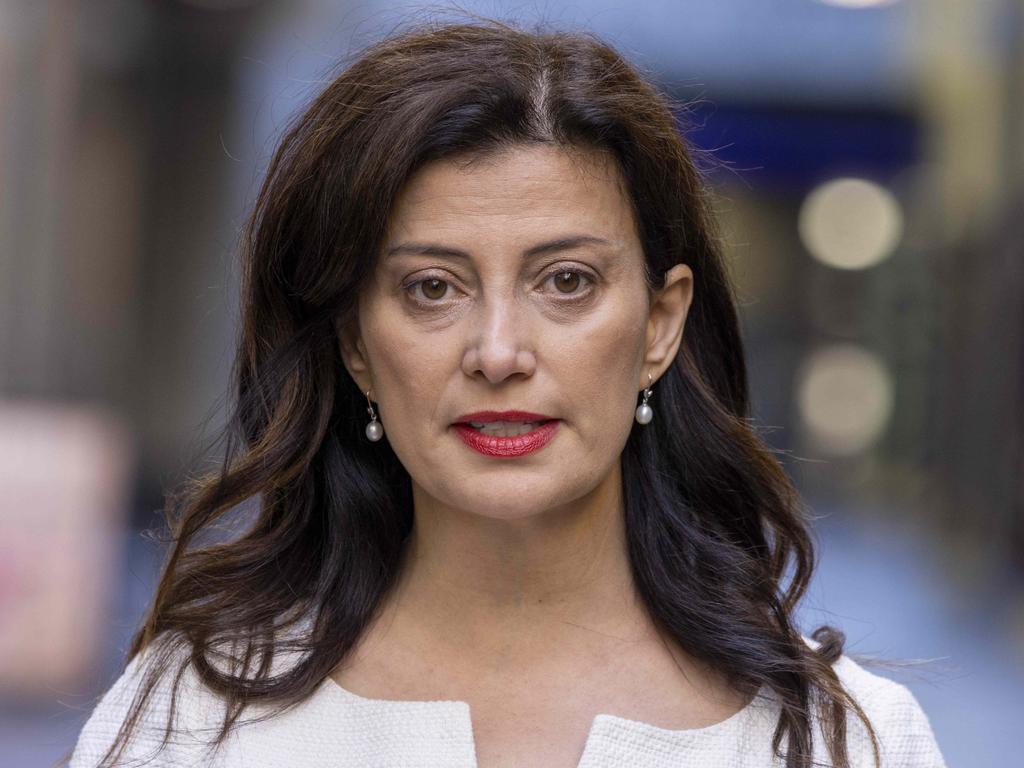We can’t turn a blind eye to APY Art Centre Collective allegations

For years there had been rumours circulating about how the APYACC’s vast output of monumental canvases could be sustained to meet exponential demand for its work. Coupled with this were the rumours of alleged intervention by non-Indigenous APYACC staff into artists’ paintings under general manager Skye O’Meara.
But the extent of the alleged intervention, uncovered in Greg Bearup’s reporting, was breathtaking in its arrogance. It showed a blatant dismissal of the Indigenous artists involved, whose cultural representations were at best generalised and at worse bastardised. Even worse than the alleged “artistic” intervention were further allegations of coercion that followed, including bribery, bullying, forgery and threats. Outrage was expressed by many across the sector with demands O’Meara stand down until an investigation was conducted into every allegation.

The Australian’s reporting was later supported by coverage in other media outlets from across the spectrum. This was not some “right-wing conspiracy”, as some of O’Meara’s supporters were claiming behind the scenes. It was a situation that required urgent examination from experts capable of addressing all aspects of this complex and sensitive situation.
First Nations’ cultural agencies spoke out, saying these allegations had to be addressed as a matter of urgency due their implications for the entire sector. Northern Territory Arts Minister Chansey Paech, a First Nations man, was one of the first to call for support across the NT, South Australia and Western Australia, where the APY Lands span. He echoed the sentiments of many who believed the allegations demanded a national response.
Many of us with longstanding experience across the First Nations cultural industry are familiar with the complex operations affecting remote arts centres. Managing these centres is a tough job, where the standard 9 to 5, 35-hour week is non-existent.
Sometimes it is beneficial for partners to share joint art centre positions to support each other as well as the artists who rightly consider these hubs a core part of their homelands.

I have worked with many brilliant non-Indigenous art centre managers across the country whose commitment to the community in which they live and work is as profound as to the artists to whom they provide service. Stylistic diversity among artists within and between art centres is encouraged.
That artists are entitled to be assisted in the creation of their own work is not in question. But what must be questioned is the level of artist-approved “assistance” that crosses the line into paternalistic intervention.
Artists from remote regions, particularly the APY Lands, regularly win major prizes with a seemingly limitless supply of canvases by junior and senior artists. Increasingly, however, the paintings have appeared generic, with a sameness in stylistic content. This does not sit right with me and many of my colleagues.
There were other similar instances when demand for the “artists of the moment” exceeded capacity for supply, including works by highly desired masters Emily Kame Kngwarreye and Rover Thomas, with works of questionable provenance continuing to surface long after both had died. Controversy and controversial personalities have always been part of the cultural DNA of this sector. But in the case of the APYACC revelations we have seen this issue sink to a new low, with allegations extending far beyond that of white hands intervening in the creation of black artworks.
This could likely impact APYACC outlets in Adelaide, Melbourne and Sydney, as well as its ties to commercial galleries across the country and art exhibitions. It threatens to undermine the entire sector and the good work of Indigenous artists across the country.
In May, federal Arts Minister Tony Burke announced he would meet his NT and SA counterparts to discuss the possibility of an independent review into the allegations of malpractice concerning the APYACC. Later he announced there would be co-operation with the commonwealth to “protect the integrity of First Nations art”.

In June I was approached by SA Arts Minister Andrea Michaels to undertake the review. I was recommended because of my experience leading multidisciplinary Indigenous creatives across the country and overseas for more than four decades. From my discussion with Michaels it was clear I would lead the panel. I questioned aspects of the review and sought clarification on its scope: was it going to be tri-state or, as Burke said, a federal review? Michaels said it was to be a review of SA alone – effectively ignoring the national reach of the APYACC. Those who are familiar with my personal and professional approach know I do not prioritise those who love photo-ops and speaking on behalf of (or shutting down) Indigenous voices. I made it clear to Michaels I did not intend to invest my time in a review that simply produced a report with recommendations that would be shelved if they did not espouse the outcomes desired by state and federal arts ministers.
When I agreed to lead the review, I made it clear I would not sign a confidentiality clause to shut me up. I refused to be a participant in yet another report that reiterated empty platitudes only to be ignored or dismissed in the same way so many other First Nations issues have been. But as the weeks passed the review process was already encountering barriers. After a meeting with all the panel members, we agreed to the terms of reference and remit of the review and delivered it to the SA government.
The entire panel agreed the remit should be expanded nationally and not be confined to arts and culture but to Indigenous affairs. We also discussed taking our concerns to Indigenous members of parliament in Canberra.

But then there was a long silence. My emails, calls and texts to SA’s Department of Premier and Cabinet, requesting updates on the review’s progress, went unanswered. One panel member went missing in action and the tone from another turned chilly. So when I was informed last week by Michaels that I would be replaced, I was not surprised. When I asked who would bring my level of expertise, she said another person with limited experience would be “able to cover that”. My replacement was a highly respected person with extensive trauma experience, which Michaels said was a greater requirement to the process than expertise in art and culture.
Michaels said I was “just not the right fit” for the panel, making it clear whose voices would be listened to in this process. Pressed later on local and national ABC radio interviews, she said I was considered too set in my ways and “biased”. To have my professionalism undermined, to be gaslit by state and federal politicians – who profess to be “friends of the Aborigines” and support us in having our voices heard – is something I will not entertain.
Following Bearup’s investigation, serious questions must be asked. We cannot afford to downplay or turn a blind eye to the allegations brought forward by Indigenous community members and this newspaper. What has not been properly raised in this fiasco is all those cultural institutions and private collectors terrified that the value of their artworks will plummet if the true stories behind their bit of “Dreaming” are revealed to be nothing more than shams.
Funding must be returned to the First Nations portfolio at the Australia Council for the Arts, placing it back under the aegis of respected and experienced First Nations’ creative agencies, as was the case for decades since the Aboriginal Arts Board was established under the Whitlam government.
Until then we will continue to see and hear allegations of abuse, misconduct and corruption where those most seriously affected are also the most vulnerable – the artists, their families and communities. Sacred rock holes have been poisoned.
Brenda L. Croft is professor of Indigenous art history and curatorship at the Australian National University.






Like so many of my colleagues with longstanding experience in the First Nations arts sector, I was appalled when serious allegations of white hands interfering in black art at the APY Art Centre Collective were reported by The Australian in early April.